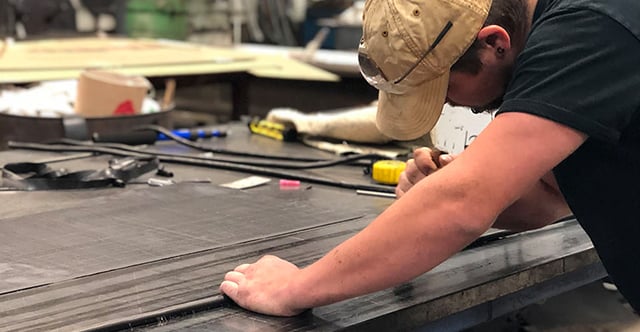 When you think about rubber, you may think about the synthetic rubber that’s primarily used in manufacturing today, Styrene-Butadiene Rubber (SBR). But natural rubber, the “original” rubber, still has its place in the chemical, mining, fertilizer, transportation and environment industries.
When you think about rubber, you may think about the synthetic rubber that’s primarily used in manufacturing today, Styrene-Butadiene Rubber (SBR). But natural rubber, the “original” rubber, still has its place in the chemical, mining, fertilizer, transportation and environment industries.
Natural rubber is made essentially the same way today that it was more than a thousand years ago, with a few tweaks. It starts as a white, milky sap, called latex milk, that is tapped from the rubber tree or Hevea Brasiliensis. This tree originally was found in South America, but natural rubber is now found across the world. In fact, 90% of natural rubber production comes from Asia with Thailand, Indonesia and Malaysia being the largest suppliers. The latex is then processed, which includes being dried, chopped up, mixed with other chemicals, shaped and then vulcanized.
The vulcanization process is what makes rubber so useful today. Invented by Charles Goodyear in 1839, the vulcanization process, or heat treatment, makes rubber harder and more durable, so it’s ideal for today’s uses.
Uses for Natural Rubber
Natural rubber’s properties offer excellent protection against corrosion and abrasion. Natural rubber has a resistance to acid, chemicals and alkalis. Rubber linings are often used on machinery, like chutes, pump housings and fan systems, that come in contact with these corrosive materials.
Natural rubber also exhibits superior abrasion resistance qualities compared to other lining materials. A natural rubber liner or having natural rubber applied to rollers, pulleys, tumbling barrels and other pieces of equipment, extends the machine’s life by resisting metal-on-metal, sand-on-metal and other types of abrasion.
We’ve used natural rubber on many items like suction throats, feeder inlets, hydronizer inlets with holes, pipes, sand flumes, tank fittings, sand chutes, cyclones and the list goes on. Plus, we have done custom work with natural rubber including covering a custom mixer boot, a custom paddle assembly, a table, impeller and a custom cone.
Soft natural rubber is highly-resilient and available in 40-50 durometer. It comes in red or black if color contamination is a concern. Natural rubber can handle constant exposure to temperatures up to 150°F and intermittent exposure up to 180°F. Our sales team can answer any of your questions about natural rubber and provide you with ideas on how it can improve your processes. Give us a call today!


